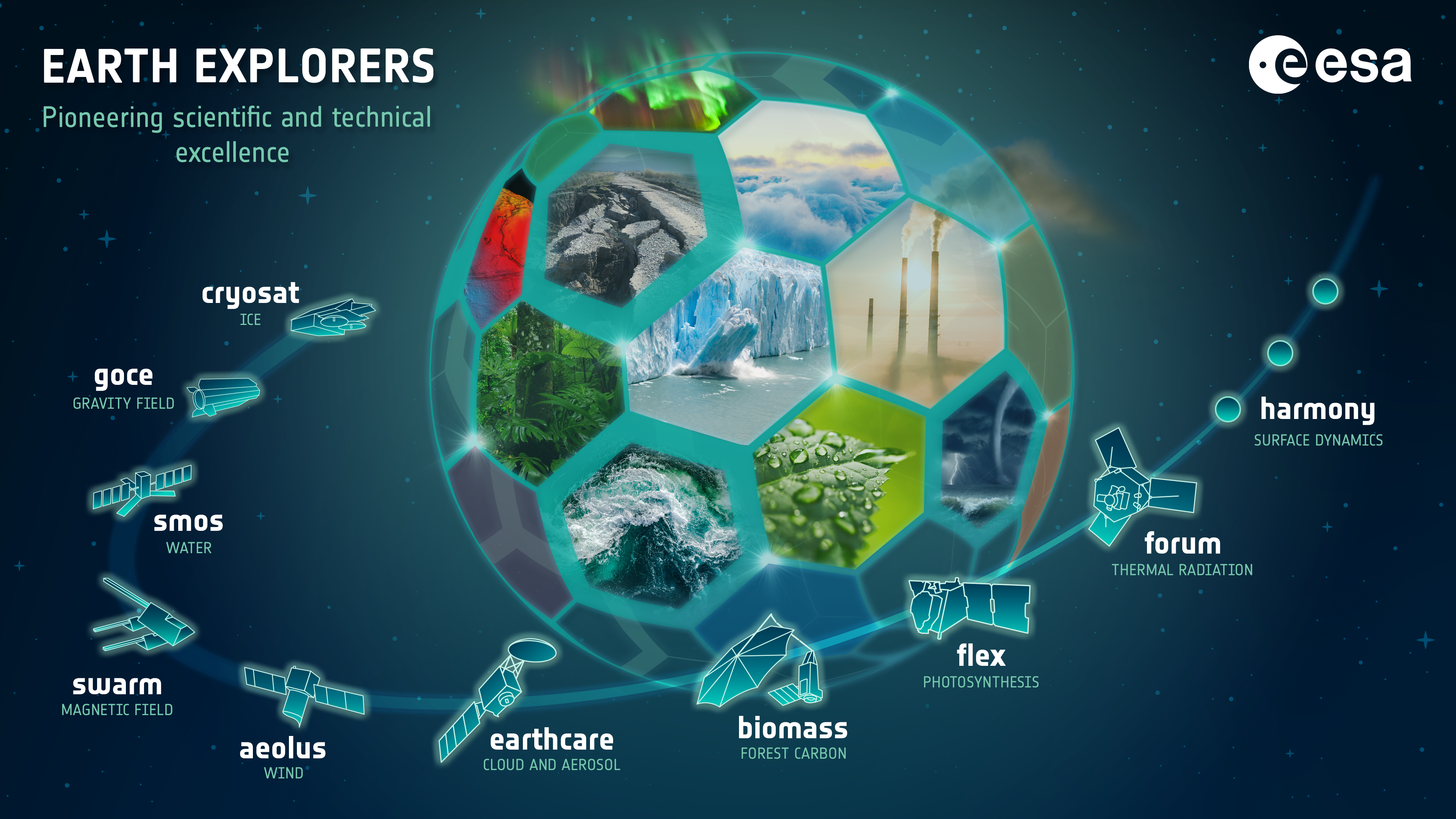Observing and understanding our planet is fundamental to acting on environmental issues, the climate crisis, and preparing for their societal impact. ESA's family of Earth Explorer satellite missions are renowned for demonstrating new technologies and returning scientific excellence in climate science .
From 17 thoroughly evaluated submissions, four new concepts have been selected to undergo full assessment, in affect taking the first competitive steps towards becoming ESA's 12th Earth Explorer. Keystone, a concept led by RAL Space, is one of these four.
Keystone would provide the first direct observations of atomic oxygen in the altitude range of 50–150 km using a unique combination of remote sensing techniques. Relatively little is known about this part of the atmosphere, which is constantly bombarded by large energy fluxes from atmospheric tides from below, and from solar radiation from above. Together with composition, temperature and wind observations, these measurements would allow scientists to study a wide range of atmospheric processes, and also look at the impact of solar cycles and space weather.

ESA's Earth Explorer missions. Credit: ESA
Dr Daniel Gerber, Keystone Principal Investigator and Remote Sensing Scientist at RAL Space, said: “We're very excited that our Keystone mission has been shortlisted for ESA's 12th Earth Explorer satellite. The remote sensing instrument, which looks at the frontier between the atmosphere and outer space from 50-150km, is using a new type of receiver technology to measure atmospheric trace gases that have so far proved to be elusive. This is the culmination of over 10 years of technology development and science activities in the UK and Europe. Here's hoping to explore one of the least well know regions of our planet, promising a cornucopia of insight on atmospheric dynamics, solar activity, and climate."
Dr Sarah Beardsley, Director of RAL Space, said: “I'm delighted that RAL Space is leading one of the four proposals selected for further study. Earth Observation is one of our key science drivers - to use space to further the understanding of our world. Congratulations to Daniel Gerber and collaborators on this important milestone!"
Simonetta Cheli, Director for ESA's Earth Observation Programmes, said: “These decisions are always challenging, particularly since the quality of all the proposals that were submitted was very high.
“The mission ideas that will now be further assessed each address key areas of science that would advance knowledge of our Earth system. We thank the Advisory Committee for Earth Observation and the science community at large for their continuing support in helping us select the best ideas that will fill research gaps and demonstrate new ways of observing our planet from space."
Other selected mission ideas
CryoRad would fill an important gap in observations of the cryosphere through the direct measurement of low-frequency passive-microwave brightness temperatures using a novel broadband radiometer. From these novel measurements key parameters such as the temperature profile of ice shelves, sea-ice thickness and sea-surface salinity in cold waters can be determined to improve our understanding of key processes in the polar regions. The mission would complement the upcoming Copernicus CIMR, CRISTAL and ROSE-L missions.
ECO would measure the difference between incoming solar radiation and outgoing radiation, which defines Earth's energy 'imbalance', and which fundamentally controls Earth's climate system. It would be the first time that this imbalance has been measured directly and would help reveal the future trajectory of the climate decades earlier than relying on monitoring global temperature and sea-level rise, as is currently the case. The unique concept envisages a satellite constellation, each carrying four wide field-of-view radiometers to ensure unprecedented coverage, accuracy and stability.
Hydroterra+ would be placed in geostationary orbit, which is unusual for an Earth-science radar mission. From this fixed position above the equator, the satellite's C-band synthetic aperture radar would deliver data twice a day over Europe, the Mediterranean and northern Africa to understand rapid processes tied to the water cycle and tectonic events in these regions.
Read the full announcement from ESA.
